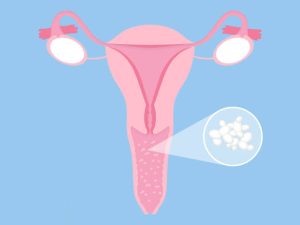By Alqasim Gbemisola

Vaginal yeast infection is a fungal infection that causes irritation, discharge and intense itchiness of the vagina and the vulva — the tissues at the vaginal opening. It is a type of vaginitis, a condition where the vagina is swollen, painful and possibly infected.
Also called vaginal candidiasis, vaginal yeast infection affects up to 3 out of 4 women at some point in their lifetimes. Many women experience at least two episodes.
However, a vaginal yeast infection isn’t considered a sexually transmitted infectionMedications can effectively treat vaginal yeast infections. If you have recurrent yeast infections — four or more within a year — you may need a longer treatment course and a maintenance plan.
Here are signs and symptoms of vaginitis
-Extensive redness.
-Swelling and itching that leads to tears.
– Crack or sores.
One has four or more yeast infections in a year.
This infection is caused by a less typical type of fungus. Another thing is pregnancy, also, uncontrolled diabetes and lastly, the immune system becomes weakened because of certain medications or conditions such as HIV infection.
When to See Your Doctor
Make an appointment with your doctor if:
This is the first time you’ve had yeast infection symptoms
You’re not sure whether or not you have a yeast infection.
Your symptoms aren’t relieved after treating with over-the-counter antifungal vaginal creams or suppositories
You develop other symptoms
Your vagina naturally contains a balanced mix of yeast, including candida, and bacteria. Certain bacteria (lactobacillus) act to prevent an overgrowth of yeast.
But that balance can be disrupted. An overgrowth of candida or penetration of the fungus into deeper vaginal cell layers causes the signs and symptoms of a yeast infection.
Overgrowth of Yeast can Result to:
Antibiotic use, which causes an imbalance in -natural vaginal flora.
-Pregnancy.
-Uncontrolled diabetes
-An impaired immune system
-Taking oral contraceptives or hormone therapy that increase estrogen levels.
Another thing one must know is that candida albican is. common type of fungus that causes yeast infections. Yeast infections caused by other types of candida fungus can be more difficult to treat, and generally need more-aggressive therapies.
Here are the factors that increase your risk of developing a yeast infection.
-Antibiotic use. Yeast infections are common in women who take antibiotics.
-Broad-spectrum antibiotics, which kill a range of bacteria, also kill healthy bacteria in your vagina, leading to overgrowth of yeast.
-Increased estrogen levels.
– Yeast infections are more common in women with higher estrogen levels — such as pregnant women or women taking high-dose estrogen birth control pills or estrogen hormone therapy.
-Another one is uncontrolled diabetes. Women with poorly controlled blood sugar are at greater risk of yeast infections than women with well-controlled blood sugar.
Impaired immune system.
-Women with lowered immunity — such as from corticosteroid therapy or HIV infection — are more likely to get yeast infections.
Prevention.
To reduce your risk of vaginal yeast infections, wear underwear that has a cotton crotch and doesn’t fit too tightly.
This might also help to avoid:
-Tight-fitting pantyhose.
-Douching, which removes some of the normal bacteria in the vagina that protect you from infection.
-Scented feminine products, including bubble bath, pads and tampons.
-Hot tubs and very hot baths
Unnecessary antibiotic use, such as for colds or other viral infections.
-Staying in wet clothes, such as swimsuits and workout attire, for long periods of time.
